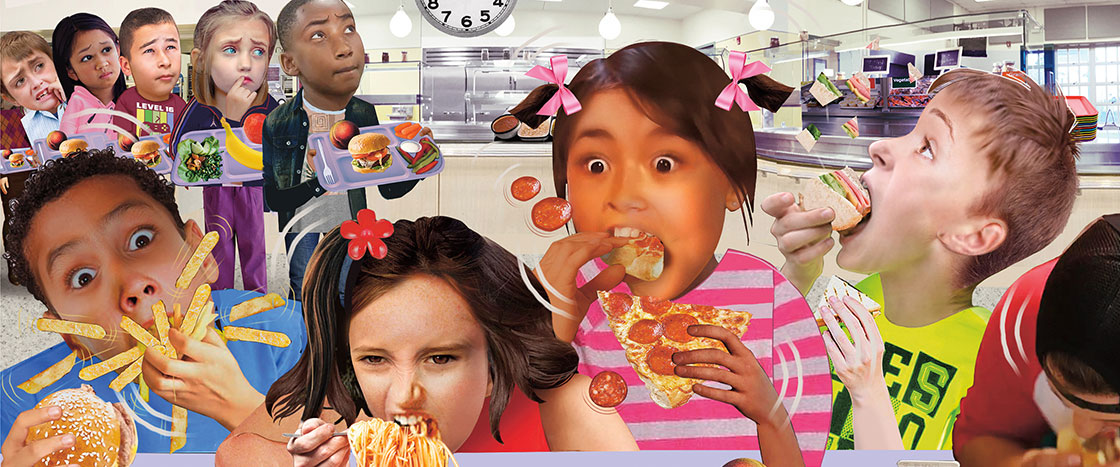It’s noon—lunchtime at last! It’s pizza day, and everyone is excited. You hustle through the hallways with your classmates and join the long line in the cafeteria.
Finally, you get your food, find a seat, and start to dig in when—RRRRING! You shove a big bite of pizza in your mouth before rushing back to class. Sounds familiar? You’re not alone.
In many schools in the United States, students have about 25 minutes for lunch. When you consider how long it takes to get to the cafeteria, wait in line, and take a bathroom break, there isn’t much time left to eat. Sometimes kids have only five minutes.
That’s why some schools have started making lunchtimes longer. Should more schools do the same?
It’s lunchtime at last! You rush to the cafeteria with your class. You join the long line.
Finally, you get your food. You find a seat. You start to eat when the bell rings. RRRRING! Lunchtime is over. You shove a big bite in your mouth before hurrying back to class. Does this sound familiar? You're not alone.
In many schools in the United States, students have about 25 minutes for lunch. Think about how long it takes to get to the caferteria and wait in line. There isn’t much time left to eat! Some kids have only five minutes.
That's why some schools have made lunchtimes longer. Should more schools do the same?

